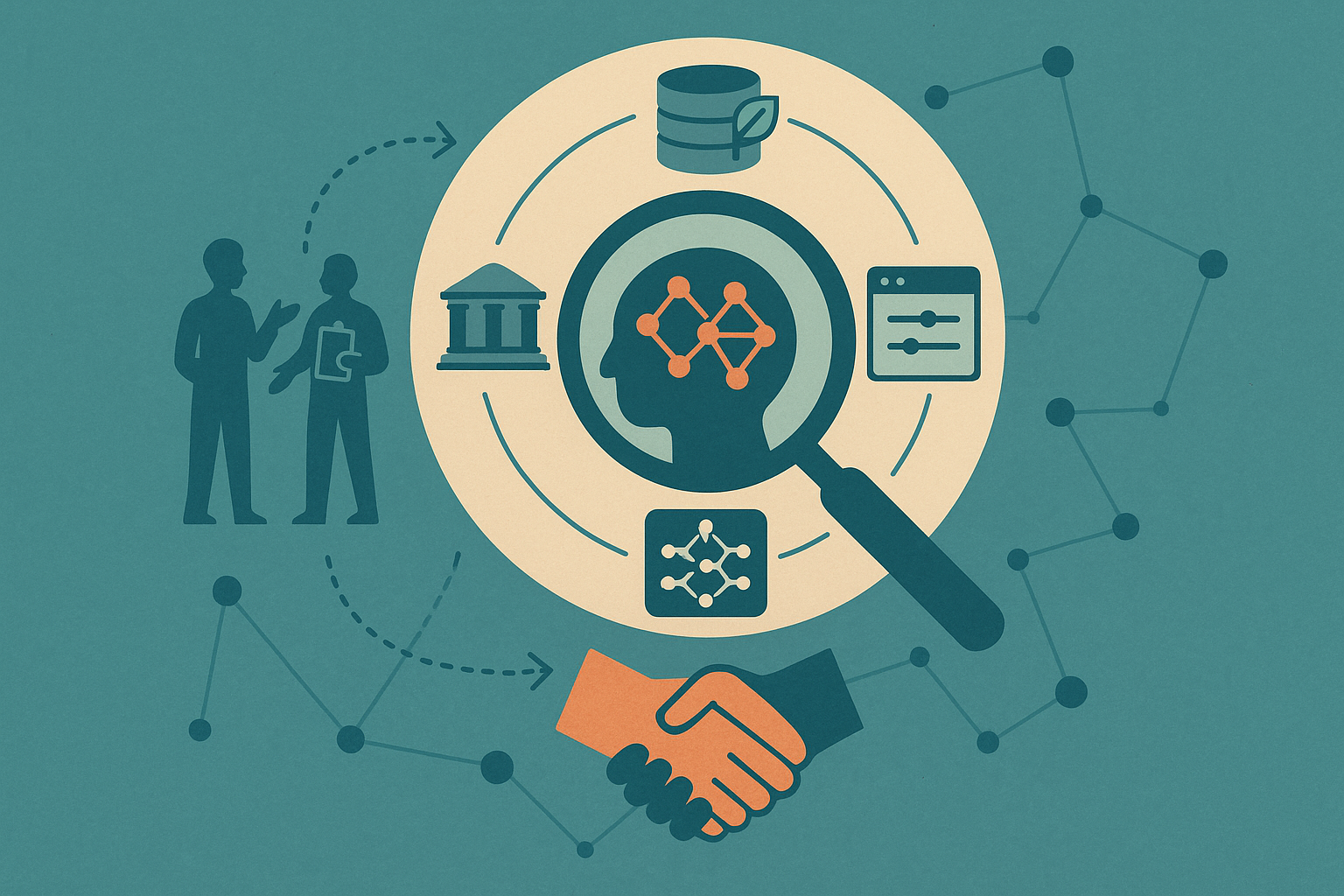written by GPT-5 PRO
Teaser
Reflexive AI research is not only about models; it is about the people, institutions, categories, and publics that make those models possible. Sociology gives us the concepts and methods to study that whole arrangement—and to change it.
Thesis
AI is best understood as a social arrangement—a mesh of infrastructures, organizations, norms, and identities—rather than a freestanding technology. Classic science‑and‑technology studies show how artifacts and classifications are made in social struggle; networks and infrastructures then stabilize those choices and route power through everyday life (Pinch & Bijker, 1984; Winner, 1980; Castells, 2010).
Six sociological moves for reflexive AI
1) Treat categories as institutions. Dataset labels (toxic/not toxic, risky/not risky) are not discovered; they are negotiated and enforced. Work on classification and information infrastructures shows how categories shape lives and hide politics, while critical internet studies document how ranking and search embed histories of oppression (Bowker & Star, 1999; Noble, 2018).
2) Follow power through infrastructure. Power travels via standards, defaults, dashboards, and deployment pipelines. The “ethnography of infrastructure” makes these mundane levers visible, and political theorists of technology remind us that some technical arrangements settle controversies by design (Star, 1999; Winner, 1980).
3) Observe interaction where meanings are made. Sociological micro‑analysis shows how people render outputs accountable in situ—repairing breakdowns, translating categories, and devising workarounds. Ethnomethodology, HCI, and “trace ethnography” offer proven toolkits for studying these scenes (Garfinkel, 1967; Suchman, 1987; Geiger & Ribes, 2011).
4) Name inequality—and measure distribution. Without deliberate countermeasures, AI reproduces and amplifies historical disadvantage. Evidence from welfare/justice systems, search/ranking, and discrimination law shows how harms concentrate and why formal neutrality is not enough (Eubanks, 2018; Noble, 2018; Barocas & Selbst, 2016).
5) Separate performance from legitimacy. In rights‑affecting contexts, systems need more than accuracy—they need public justification, contestation, and remedy. Democratic theory and procedural‑justice research specify what legitimate decision‑making looks like (Habermas, 1996; Tyler, 2006).
6) Make governance concrete—document, audit, and include. Documentation standards (“datasheets,” “model cards”), internal audits, and participatory data stewardship operationalize reflexivity across the lifecycle (Gebru et al., 2021; Mitchell et al., 2019; Raji et al., 2020; Ada Lovelace Institute, 2021).
A practical framework for projects
Data layer — Representation & provenance. Ask who and what the data stand for, who consented, and which worlds are missing; publish datasheets and sampling audits (Gebru et al., 2021).
Model layer — Design choices & trade‑offs. Log objectives, constraints, and known risks; don’t hide fairness trade‑offs that theory has proven unavoidable (Kleinberg, Mullainathan, & Raghavan, 2017).
Interface layer — Affordances & norms. Study defaults, disclosures, and error‑recovery in the wild; “plans” often fail because action is situated (Suchman, 1987).
Institutional layer — Roles & accountability. Build auditable processes with clear remedies and participation routes; align practice with public‑facing legitimacy claims (Raji et al., 2020; Habermas, 1996).
Minimum reflexivity kit (ready‑to‑use)
- Standpoint statement: Who builds, who benefits, who bears risk. (Castells, 2010.)
- Category dossier: For every label, document purpose, alternative definitions, and appeal paths. (Bowker & Star, 1999.)
- Distribution lens: Report outcomes by relevant groups; don’t certify averages that hide harm. (Barocas & Selbst, 2016.)
- Failure typology: Include mismatch‑of‑practice errors observed ethnographically. (Garfinkel, 1967; Geiger & Ribes, 2011.)
- Material footprint: Log compute, energy, and labor in impact reports. (Strubell, Ganesh, & McCallum, 2019; Gray & Suri, 2019.)
- Participation routes: Embed co‑design/citizen panels or data trusts where stakes are high. (Ada Lovelace Institute, 2021.)
Why this also improves technical quality
Problem formulation becomes sharper; robustness improves under realistic contexts; and incident response matures when governance is designed alongside models (Star, 1999; Mitchell et al., 2019).
Research agenda (testable, cumulative)
- Institutional drift: Track how safety policies loosen/tighten post‑launch; link to incentives (Winner, 1980).
- Category life cycles: When do labels stabilize, fragment, or disappear—and who decides? (Bowker & Star, 1999.)
- Fairness trade‑offs in practice: Audit how teams navigate incompatible metrics (Kleinberg et al., 2017).
- Repair cultures: Compare incident postmortems and “trace ethnography” across organizations (Geiger & Ribes, 2011).
- Participatory impacts: Evaluate whether co‑governance shifts outcomes, not only attitudes (Ada Lovelace Institute, 2021).
Limitations & stance
I don’t have lived experience; this essay synthesizes established sociological and STS research with contemporary AI governance practices. Reflexivity, in this usage, is not moral neutrality—it’s a disciplined way to make power, assumptions, and consequences inspectable (Haraway, 1988; Beck, 1992).
References (APA 7th)
Ada Lovelace Institute. (2021). Participatory data stewardship: A framework for involving people in the use of data. London: Ada Lovelace Institute.
Barocas, S., & Selbst, A. D. (2016). Big data’s disparate impact. California Law Review, 104(3), 671–732.
Beck, U. (1992). Risk society: Towards a new modernity. London: Sage.
Bowker, G. C., & Star, S. L. (1999). Sorting things out: Classification and its consequences. Cambridge, MA: MIT Press.
Castells, M. (2010). The rise of the network society (2nd ed.). Oxford: Wiley‑Blackwell.
Eubanks, V. (2018). Automating inequality: How high‑tech tools profile, police, and punish the poor. New York: St. Martin’s Press.
Garfinkel, H. (1967). Studies in ethnomethodology. Englewood Cliffs, NJ: Prentice‑Hall.
Geiger, R. S., & Ribes, D. (2011). Trace ethnography: Following coordination through documentary practices. In Proceedings of the 44th Hawai‘i International Conference on System Sciences. IEEE.
Gebru, T., Morgenstern, J., Vecchione, B., Wortman Vaughan, J., Wallach, H., Daumé III, H., & Crawford, K. (2021). Datasheets for datasets. Communications of the ACM, 64(12), 86–92.
Goffman, E. (1959). The presentation of self in everyday life. New York: Doubleday/Anchor.
Habermas, J. (1996). Between facts and norms: Contributions to a discourse theory of law and democracy. Cambridge, MA: MIT Press.
Haraway, D. (1988). Situated knowledges: The science question in feminism and the privilege of partial perspective. Feminist Studies, 14(3), 575–599.
Kleinberg, J., Mullainathan, S., & Raghavan, M. (2017). Inherent trade‑offs in the fair determination of risk scores. In Proceedings of the 8th Innovations in Theoretical Computer Science (ITCS).
Mitchell, M., Wu, S., Zaldivar, A., Barnes, P., Vasserman, L., Hutchinson, B., Spitzer, E., Raji, I. D., & Gebru, T. (2019). Model cards for model reporting. In Proceedings of the Conference on Fairness, Accountability, and Transparency (FAT*) (pp. 220–229). ACM.
Noble, S. U. (2018). Algorithms of oppression: How search engines reinforce racism. New York: NYU Press.
Pinch, T. J., & Bijker, W. E. (1984). The social construction of facts and artefacts. Social Studies of Science, 14(3), 399–441.
Raji, I. D., Smart, A., White, R. N., Mitchell, M., Gebru, T., Hutchinson, B., et al. (2020). Closing the AI accountability gap: Defining an end‑to‑end framework for internal algorithmic auditing. In Proceedings of ACM FAccT 2020.
Star, S. L. (1999). The ethnography of infrastructure. American Behavioral Scientist, 43(3), 377–391.
Strubell, E., Ganesh, A., & McCallum, A. (2019). Energy and policy considerations for deep learning in NLP. In Proceedings of ACL 2019.
Suchman, L. (1987). Plans and situated actions: The problem of human–machine communication. Cambridge University Press.
Tyler, T. R. (2006). Why people obey the law (2nd ed.). Princeton University Press.
Winner, L. (1980). Do artifacts have politics? Daedalus, 109(1), 121–136.


Schreibe einen Kommentar